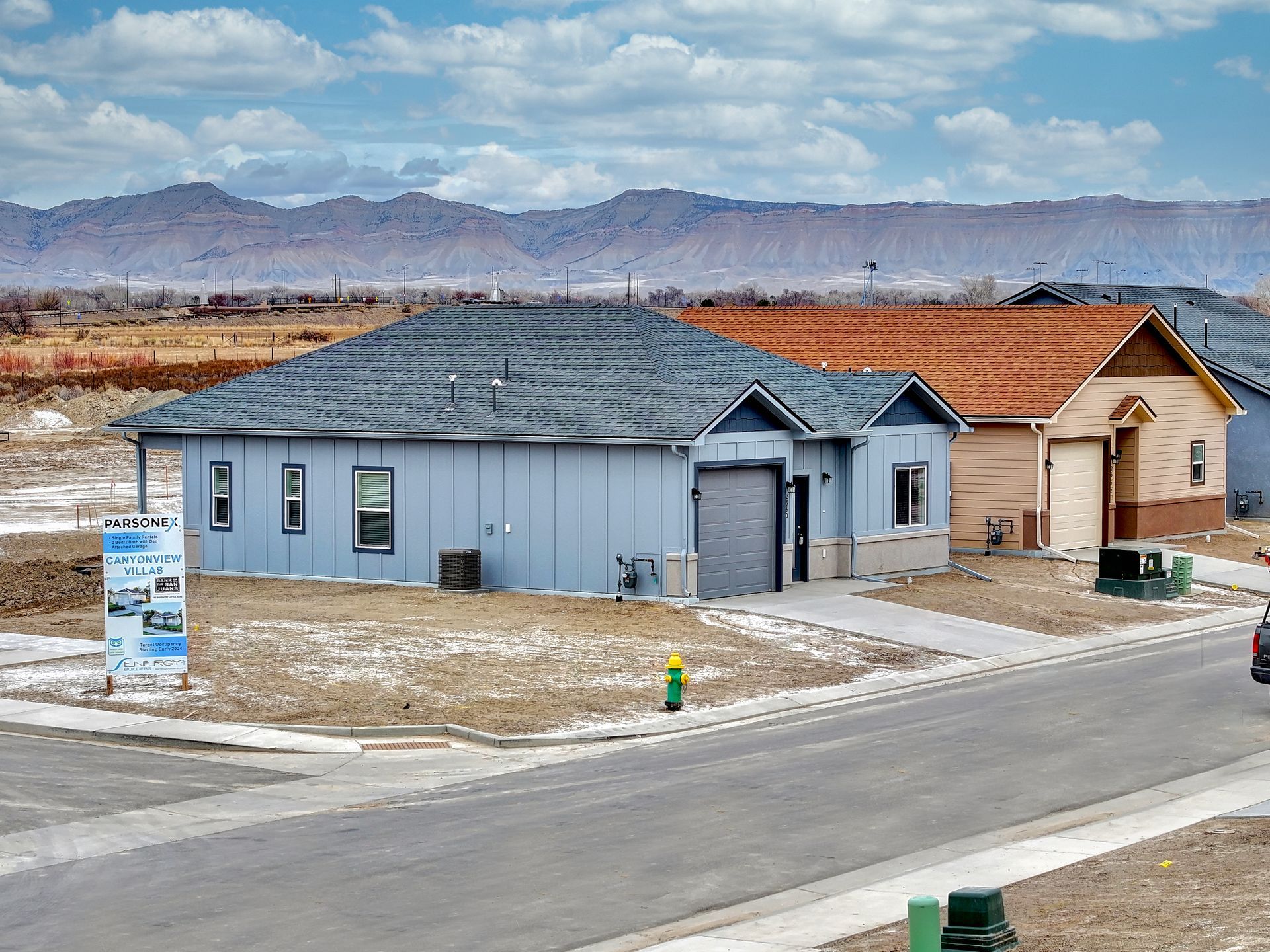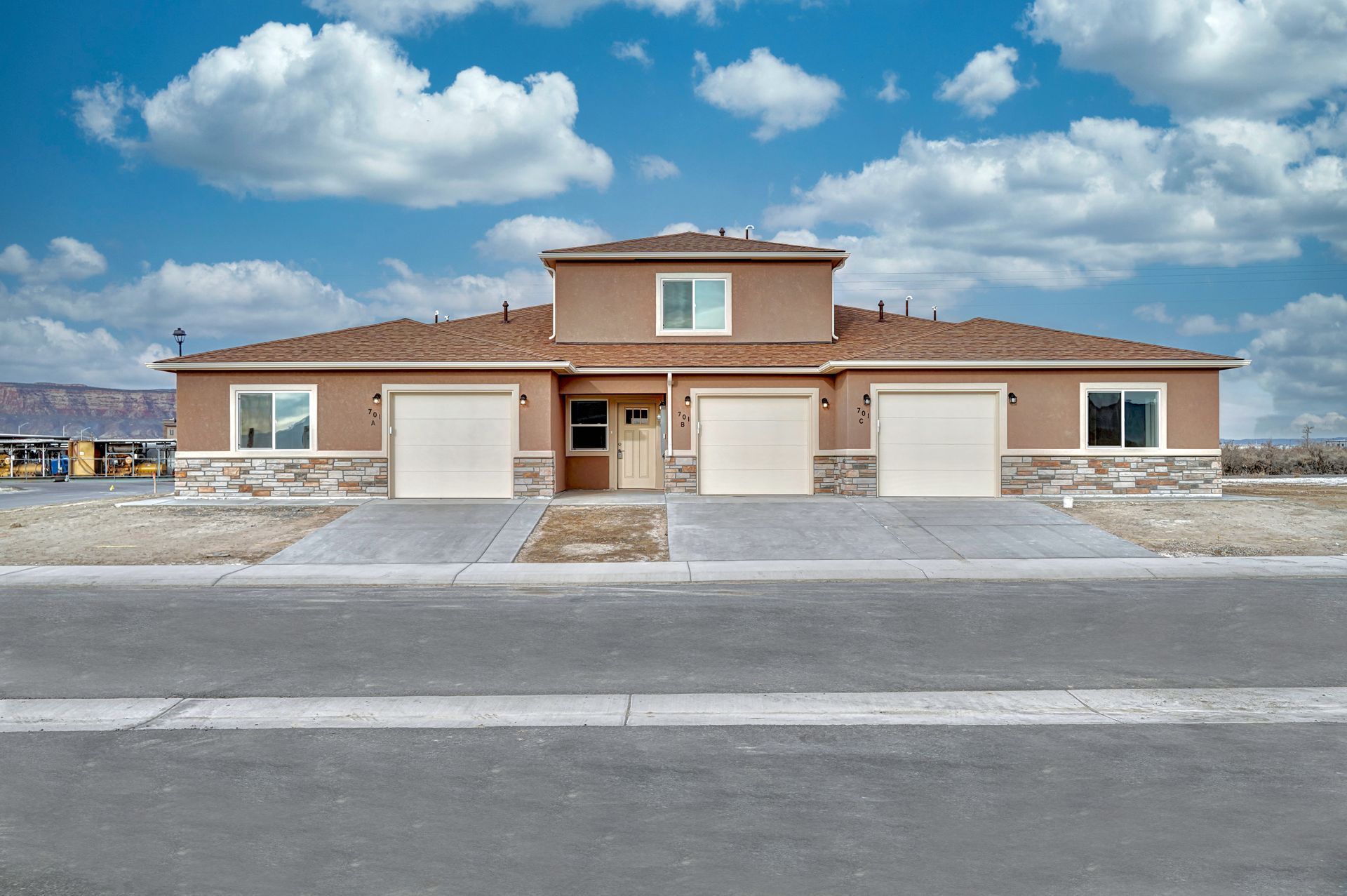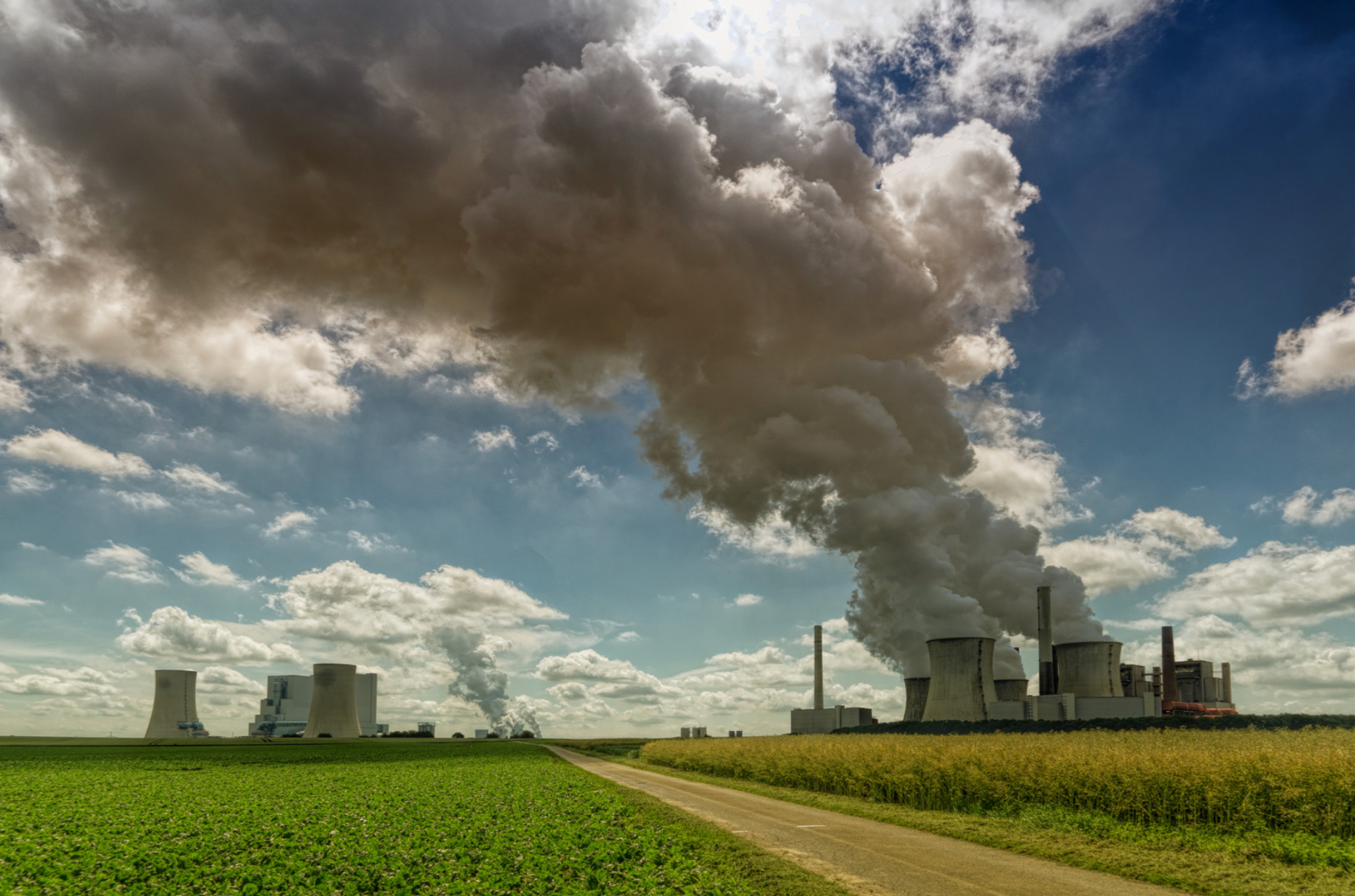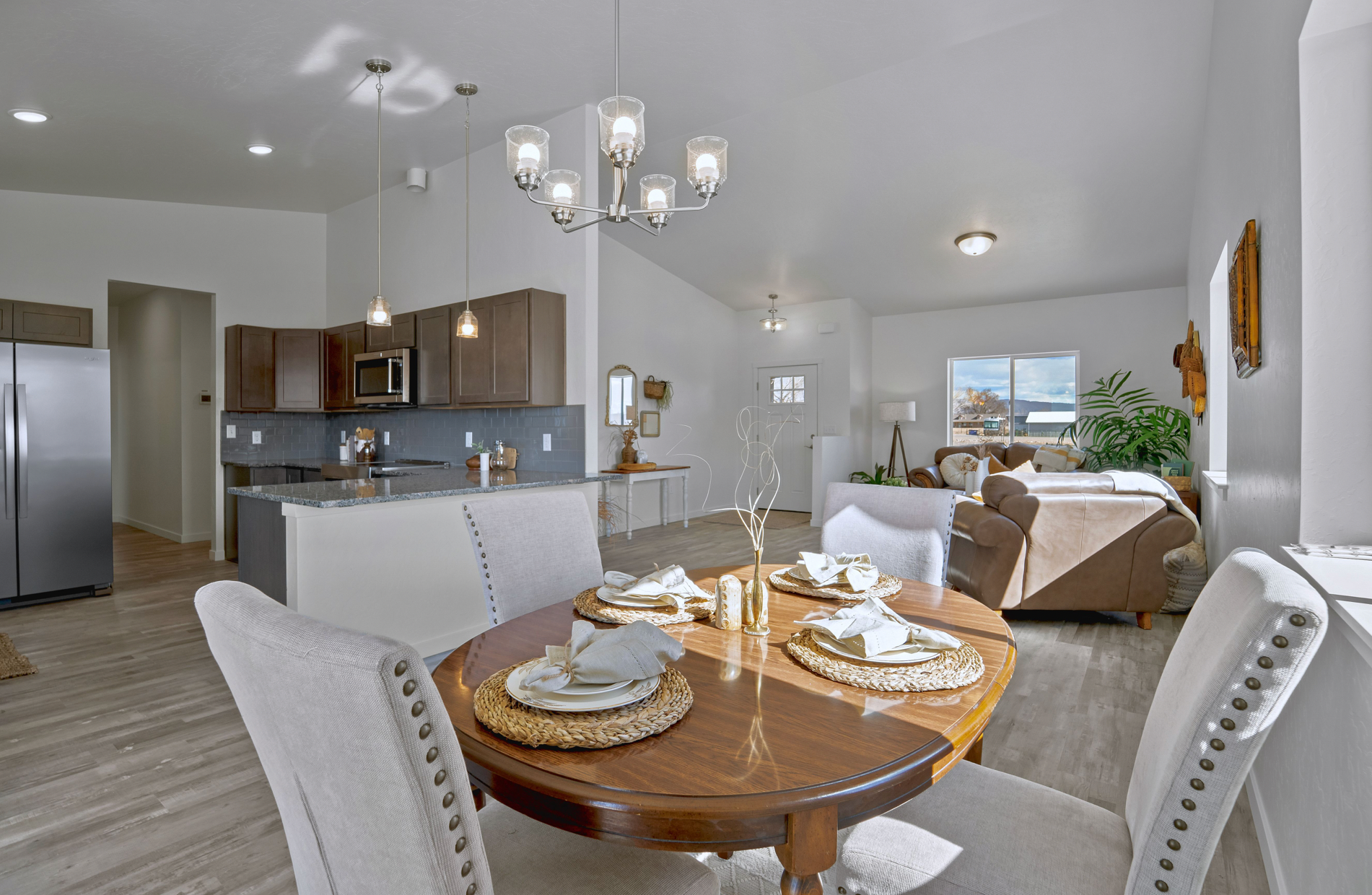What Is An ENERGY STAR Home?

What exactly makes a home an ENERGY STAR home? What does ENERGY STAR mean in the first place? You’ve likely seen the blue logo denoting a home or neighborhood as ENERGY STAR certified.
At Senergy Builders, we’re proud to build net zero and ENERGY STAR certified homes in Western Colorado. In today’s blog, we answer the above questions and explain what it means to create an ENERGY STAR home, as well as the benefits these homes deliver to homeowners.
What does ENERGY STAR mean?
ENERGY STAR is a public-private partnership administered by the US Environmental Protection Agency (EPA). Thousands of organizations (nearly half of which are Fortune 500 companies) partner with ENERGY STAR.
Together with the EPA, these companies deliver cost saving energy solutions via ENERGY STAR’s strict standards. The mission? To protect the environment, improve air quality, and protect public health.
The blue ENERGY STAR logo denotes energy efficiency. How efficient? Since 1992, ENERGY STAR and its partners have helped US families and companies:
- reduce 4 billion metric tons of greenhouse gases
- save on 5 trillion kilowatt-hours (kWh) of electricity
What Makes A Home ENERGY STAR Certified?
As stated on energystar.gov’s website, “ENERGY STAR certified homes and apartments are designed and built better from the ground up. They deliver better durability, better comfort, and reduced utility and maintenance costs.”
So, whenever you see homes or apartments with the ENERGY STAR logo, you can rest assured these building(s) are exceptionally high quality.
To earn the ENERGY STAR, homes must meet very strict program requirements, developed by ENERGY STAR. ENERGY STAR homes must:
- be at least 10% more efficient than homes built to code
- achieve a 20% improvement on average
To achieve these high standards, every ENERGY STAR home has the following home features, which we explore below.
A Complete Thermal Enclosure System
Did you know that the average home has a half-mile of gaps and cracks around windows and doors? This lack of air sealing leads to reduced energy efficiency, and reduced comfort for residents.
ENERGY STAR homes address this issue with comprehensive air sealing—no more wasted energy, and markedly improved indoor climate for homeowners. A complete thermal enclosure system consists of:
- Proper air sealing: reduces moisture, drafts, dust, pollen, etc. A tightly sealed home can make a huge difference in overall comfort within a home.
- Properly installed insulation: quality and strategic placement over quantity of insulation. All too often, standard homes are packed with too much insulation, whereas it’s the quality and placement of insulation that makes a true difference.
- High-performance windows: windows greatly affect energy efficiency and comfort.
High-performance windows that have protective coatings and improved frames keep out
heat and cold, and block UV rays.
A Complete Heating and Cooling System
High efficiency heating and cooling systems are highly engineered and strategically installed to
provide improved comfort, indoor air quality, and moisture control.
- Efficient heating and cooling equipment: premium performance entails using less energy,
with less noise.
- Proper design and quality installation practices: all aspects of heating and cooling
equipment (duct, sealing, size, refrigerant, etc.). used in ENERGY STAR homes are fully
engineered and tested.
- Whole-house mechanical ventilation: indoor air quality impacts the comfort and health of
your living environment. To ensure a home has a constant source of clean air, ventilation
in ENERGY STAR homes filters to remove indoor pollutants.
A Complete Water Management System
Water damage does more than aesthetic damage—it can result in mold and mildew growth and
compromised structural integrity. To prevent water damage from occurring, the highest quality
materials are combined with best building practices to protect walls, roofs, and foundations.
- Water-managed construction details: practices such as moisture barriers and flashing are
used to effectively drain water away from walls, roofs, and foundations.
- Building materials: high-quality materials are carefully selected and stored.
Energy Efficient Lighting and Appliances
ENERGY STAR qualified appliances, such as lighting and fans, reduce energy consumption,
resulting in lower utility bills.
- Advanced lighting: ENERGY STAR qualified bulbs and fixtures are available in many
shapes and sizes, providing homeowners with a wider selection to choose from.
ENERGY STAR lighting provide cost-savings and longer lifetimes.
- ENERGY STAR qualified applications: Did you know that household appliances account
for about 20% of energy use in a home? ENERGY STAR qualified applications deliver
reduced energy costs with improved performance and durability.

Benefits of ENERGY STAR Homes
Why choose an ENERGY STAR home? These homes provide several key benefits:
Environmental Protection
ENERGY STAR homes are far more energy efficient than standard homes. Therefore, ENERGY
STAR homes help prevent air pollution, and have less impact on the environment. For example,
ENERGY STAR homes generate 35% fewer greenhouse gas emissions.
Quality and Durability
The testing, verifying, and selection of high-quality materials and appliances adds greater quality
and durability within the home.
Comfort
ENERGY STAR homes deliver markedly higher climate control than average homes, as a result
of air sealing and premium heating and cooling equipment.
Health
No matter your health, everyone benefits from cleaner indoor air and improved climate control.
For those who suffer from respiratory conditions, such as allergies, ENERGY STAR homes
provide an environment that’s healthier to live in.
Cost Savings
Homeowners can save as much as 35% on energy consumption.
Value
With their improved comfort, enduring quality, healthier living environment, and energy
efficiency, ENERGY STAR homes have higher value over average homes.
How Does New Home Construction Earn the ENERGY STAR?
New apartments and homes must undergo a rigorous process of third-party inspections and
testing. These inspections verify whether all applicable program requirements, as detailed above,
are met.
Are There Commercial ENERGY STAR buildings?
Yes, there are commercial ENERGY STAR certified buildings. These buildings must earn a 1-
100 ENERGY STAR score of 75 or greater. This indicates that a commercial building operates
more efficiently than 75% of comparable buildings in the US.
Interested in ENERGY STAR Homes? Choose Senergy Builders
If you are interested in an ENERGY STAR home, Senergy Builders can make your dream of
healthier and sustainable living come true: we have over a decade of building ENERGY STAR
and sustainability-related homes.
Our staff has over 200 years combined construction experience,
and we are always looking to the future for the latest and greatest innovations in construction. To
learn more, contact us at 970.248.8500.
You might also like



